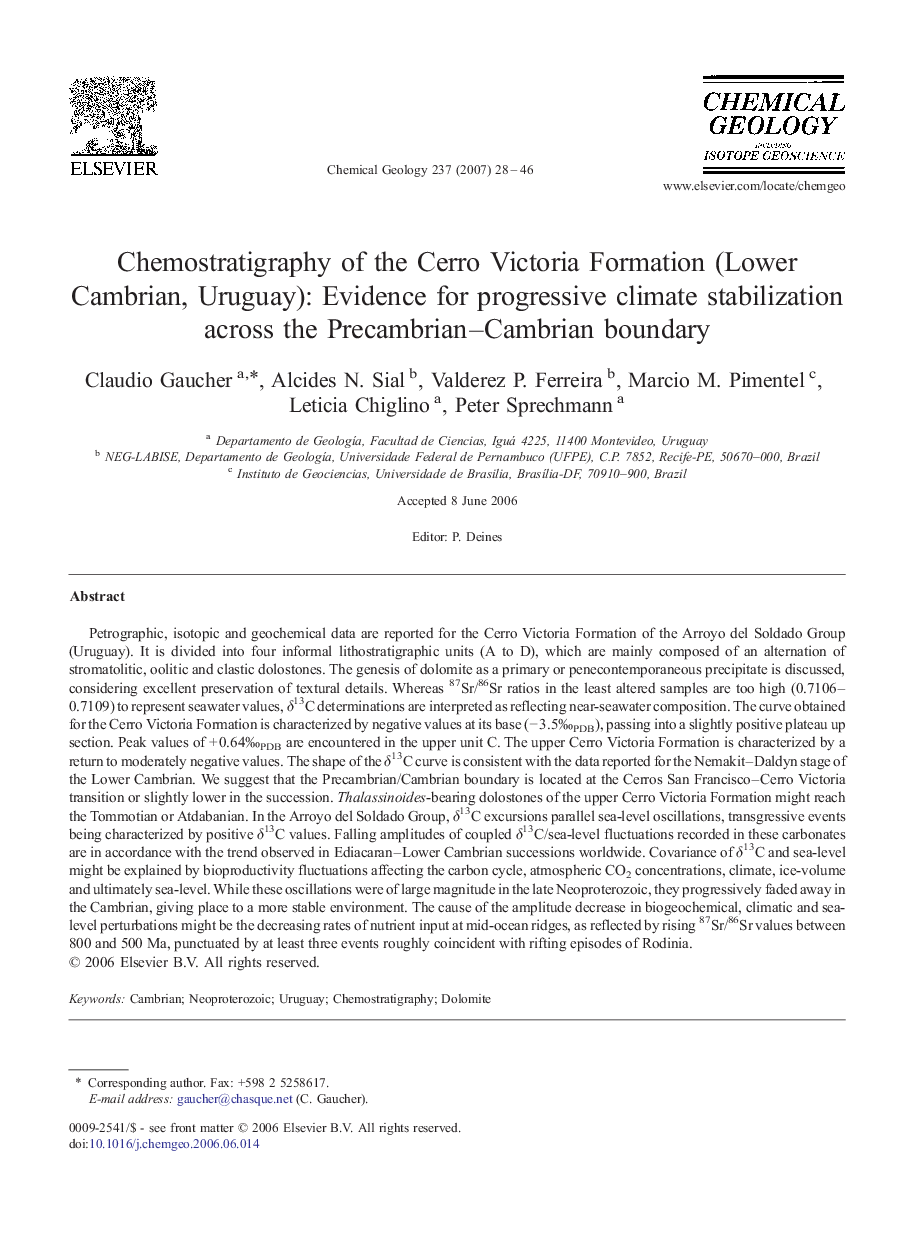| کد مقاله | کد نشریه | سال انتشار | مقاله انگلیسی | نسخه تمام متن |
|---|---|---|---|---|
| 4701102 | 1637756 | 2007 | 19 صفحه PDF | دانلود رایگان |

Petrographic, isotopic and geochemical data are reported for the Cerro Victoria Formation of the Arroyo del Soldado Group (Uruguay). It is divided into four informal lithostratigraphic units (A to D), which are mainly composed of an alternation of stromatolitic, oolitic and clastic dolostones. The genesis of dolomite as a primary or penecontemporaneous precipitate is discussed, considering excellent preservation of textural details. Whereas 87Sr/86Sr ratios in the least altered samples are too high (0.7106–0.7109) to represent seawater values, δ13C determinations are interpreted as reflecting near-seawater composition. The curve obtained for the Cerro Victoria Formation is characterized by negative values at its base (− 3.5‰PDB), passing into a slightly positive plateau up section. Peak values of + 0.64‰PDB are encountered in the upper unit C. The upper Cerro Victoria Formation is characterized by a return to moderately negative values. The shape of the δ13C curve is consistent with the data reported for the Nemakit–Daldyn stage of the Lower Cambrian. We suggest that the Precambrian/Cambrian boundary is located at the Cerros San Francisco–Cerro Victoria transition or slightly lower in the succession. Thalassinoides-bearing dolostones of the upper Cerro Victoria Formation might reach the Tommotian or Atdabanian. In the Arroyo del Soldado Group, δ13C excursions parallel sea-level oscillations, transgressive events being characterized by positive δ13C values. Falling amplitudes of coupled δ13C/sea-level fluctuations recorded in these carbonates are in accordance with the trend observed in Ediacaran–Lower Cambrian successions worldwide. Covariance of δ13C and sea-level might be explained by bioproductivity fluctuations affecting the carbon cycle, atmospheric CO2 concentrations, climate, ice-volume and ultimately sea-level. While these oscillations were of large magnitude in the late Neoproterozoic, they progressively faded away in the Cambrian, giving place to a more stable environment. The cause of the amplitude decrease in biogeochemical, climatic and sea-level perturbations might be the decreasing rates of nutrient input at mid-ocean ridges, as reflected by rising 87Sr/86Sr values between 800 and 500 Ma, punctuated by at least three events roughly coincident with rifting episodes of Rodinia.
Journal: Chemical Geology - Volume 237, Issues 1–2, 15 February 2007, Pages 28–46